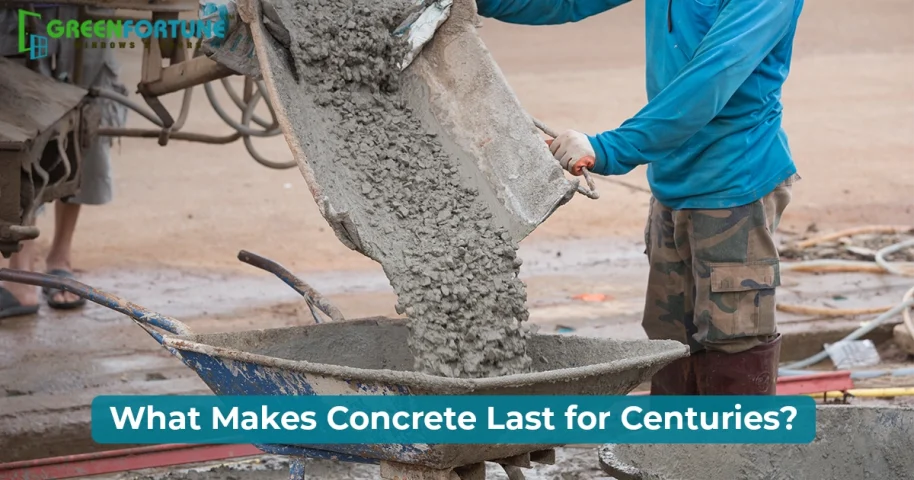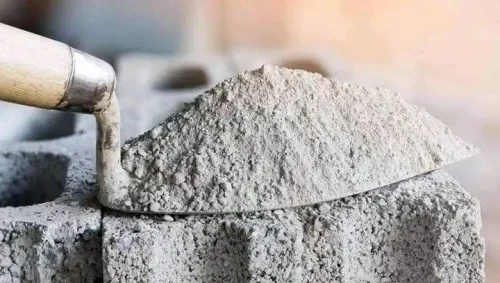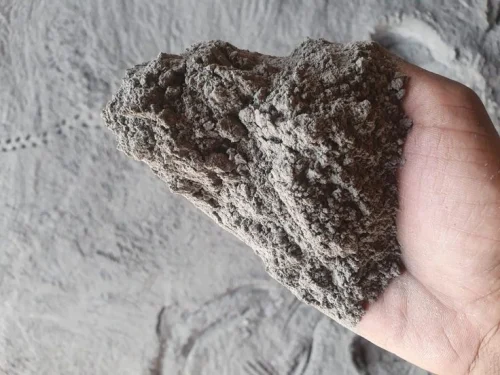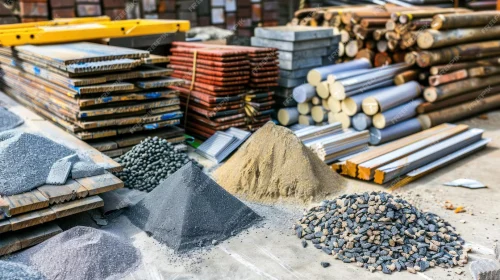
Waterproofing in Construction: Why It Must Be Done Right
April 30, 2025
Everything You Need to Know About Pneumatic Caissons
May 2, 2025Pozzolanic materials are changing the way we build, even if most people haven’t heard of them. These are special add-ons like fly ash and silica fume that go into concrete to make it stronger, last longer, and be more eco-friendly.
So why should you care? Whether you’re building a home, fixing up a room, or just curious about better building methods, these materials can help save money, improve strength, and lower the impact on the environment. They’re not just for experts. They’re a smart choice for anyone who wants to build smarter.
In this guide, we’ll explain what they are, how they work, why they matter, and how to choose the right one for your project.
Let’s get started. Your next concrete job might turn out better than you expected.
What Are Pozzolanic Materials?
Pozzolanic materials are like hidden heroes in concrete. On their own, they don’t do much. But when they’re mixed with cement and water, they react with calcium hydroxide, which naturally forms during the process. That’s when the real action starts. This reaction makes the concrete stronger, more durable, and better at resisting damage from chemicals. It’s all about teamwork that boosts the quality of concrete.
Common Types of Pozzolanic Materials
Pozzolanic Material | Source | Natural/Artificial |
Fly Ash | Byproduct of coal | Artificial |
Silica Fume | Byproduct of silicon | Artificial |
Metakaolin | Processed clay | Artificial |
Volcanic Ash | Naturally occurring | Natural |
Rice Husk Ash | Burnt rice husks | Natural |
This shows that pozzolanic materials are a mix of natural pozzolanic materials and industrial byproducts.
Why Use Pozzolanic Materials in Concrete?
Let’s face it: traditional concrete has limitations. It cracks under pressure, ages poorly in harsh climates, and has a carbon footprint that’s not so eco-friendly. That’s where pozzolanic materials come in.
Here’s why they’re a smart choice:
- They Improve Strength: Pozzolanic materials help concrete keep getting stronger even after it has hardened. This means the structure becomes more solid and durable as the days go by.
- They Boost Durability: Pozzolanic materials make concrete more resistant to water penetration, freeze-thaw cycles, and sulfates.
- They’re Environmentally Friendly: Using pozzolans like fly ash or silica fume helps recycle industrial waste and reduces cement usage.
- Better Chemical Resistance: Great for marine structures and sewage systems where chemicals attack ordinary concrete.
These reasons are exactly why pozzolanic materials are increasingly used in sustainable and high-performance construction projects.
Also Read: Best Waterproofing Techniques for Cement to Protect Your Home from Dampness
Benefits of Fly Ash in Concrete
Fly ash is one of the most commonly used pozzolanic materials, and for good reason. It's a fine powder produced during coal combustion in power plants, and instead of sending it to landfills, we use it to strengthen our buildings.
What Makes Fly Ash So Useful?
- It improves workability (easier to mix and pour)
- It reduces water demand in the mix
- It significantly improves long-term strength
- It's cost-effective and widely available
According to research by the Indian Concrete Institute, fly ash can reduce the heat of hydration in concrete by up to 40%, which helps avoid cracking in large pours like dams or foundations.
And yes, fly ash is considered a pozzolanic material because it reacts with calcium hydroxide to form additional cementitious compounds.
Also Read: What are the stages of house construction?
Comparing Fly Ash and Silica Fume
Now let’s break it down: Fly ash vs. Silica fume. Both are pozzolanic, both are industrial byproducts—but they serve slightly different purposes.
Feature | Fly Ash | Silica Fume |
Particle Size | ~10 microns | <1 micron |
Source | Coal power plants | Silicon alloy manufacturing |
Cost | Lower | Higher |
Reactivity | Slower | Extremely fast |
Best Use Case | Mass pours, general concrete | High-performance concrete, thin slabs |
Silica fume is extremely fine and gives a very dense concrete, often used in bridge decks, industrial floors, or wherever durability is non-negotiable. It’s not as cheap or as easy to handle as fly ash, but it’s incredibly powerful.
If you're wondering, "Is silica fume a pozzolanic material?"—yes, absolutely. It checks all the boxes.
How to Choose the Right Pozzolan
This depends entirely on your project. There’s no one-size-fits-all here.
Ask Yourself:
- Do I need high early strength? → Choose silica fume.
- Is cost a major factor? → Fly ash or natural pozzolans like volcanic ash are better.
- Am I building in a coastal or chemical-prone area? → You need strong sulfate resistance, so silica fume or metakaolin could be ideal.
A pozzolanic material must be composed mainly of reactive silica (SiO₂) and alumina (Al₂O₃), which help form additional calcium silicate hydrate (C-S-H), the "glue" in concrete.
Also Read: Which Is the Best Cement for House Construction in India? A Complete Guide for Homeowners
Use Case Examples You Probably Didn’t Know
- In high-rise buildings, fly ash reduces thermal cracking.
- In marine piers, silica fume protects against chloride attack.
- In highways, rice husk ash improves surface abrasion resistance.
- In homes, natural pozzolanic materials like volcanic ash add longevity.
You see—whether it’s a small patio or a skyscraper, pozzolanic materials are silently doing the heavy lifting.
Bonus: Fun Fact
Pozzolanic materials have been around for a long time, since the days of ancient Rome. The Romans mixed volcanic ash from a place called Pozzuoli with lime to build things like the Pantheon and aqueducts. Amazingly, many of those structures are still standing today, proving just how strong and lasting these materials can be
Final Thoughts
Pozzolanic materials may not get as much attention as cement or steel, but their impact is undeniable, making concrete stronger, more durable, and often more eco-friendly.
Whether you're a builder, an architect, or just someone curious about what’s holding your home together, understanding these materials gives you an edge.
Ready to build smarter?
Dream Building? Think Green Fortune
While we’re talking about building better, don’t forget the basics: windows and doors. A concrete structure with poor ventilation or cheap fittings won’t feel like home.
That’s where Green Fortune comes in. Our premium UPVC windows and doors not only elevate your home’s aesthetics but also boost energy efficiency and insulation.
Check out the range at thegreenfortune.com and give your project the final touch it deserves.
FAQs
Can pozzolanic materials be used in eco-friendly construction?
Yes, pozzolanic materials are great for sustainable building because they recycle industrial byproducts like fly ash and silica fume. Using them reduces the need for high cement content, which lowers carbon emissions. This makes them a smart choice for green construction projects.
Are there natural alternatives to industrial pozzolans?
Yes, natural pozzolanic materials like volcanic ash, burnt clay, and even certain types of soil have been used for ages. They’re great when factory-made options aren’t easy to find nearby. Plus, they’re often better for the environment and can be sourced locally.
Do pozzolanic materials affect the setting time of concrete?
Yes, they can slightly delay the initial setting time due to their slower reaction compared to cement. However, they improve the long-term strength and durability of concrete. This trade-off is usually worth it for structural integrity and sustainability.










